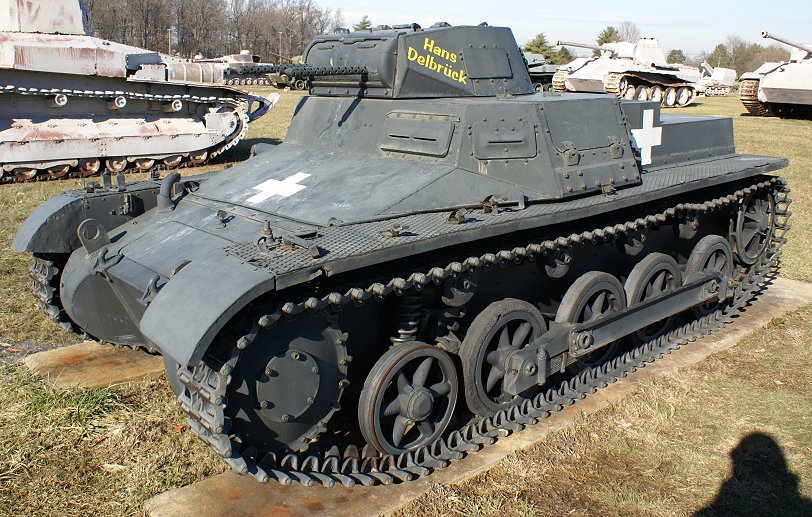
German Armor

Panzer I Ausf. B
The Panzer I was designed, built, and introduced in secrecy in 1934 based largely on a British tank the Germans had trained with in Russia. The tank was intended to be used only for training, but was used in combat up to 1940. By this time, the tank was very much obsolete, and greatly inferior to British and French vehicles. The tank was powered by a 57 horsepower engine, and it was armed with just two machine guns in a human powered turret. The difficulty of producing larger turret rings hampered German tank development.
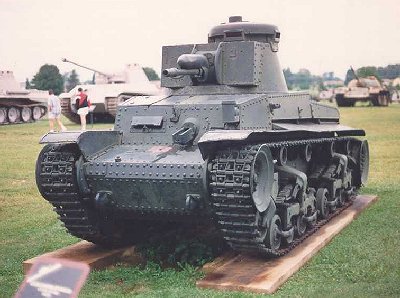
Panzer 35(t)
With German takeover of Czechoslovakia, the panzerwaffe was supplemented with Czech tanks, specifically the 38(t) and the 35(t). The Panzer 35(t) had a top speed of 25 mph and a 37.2mm main gun. These vehicles were very useful early in the war.
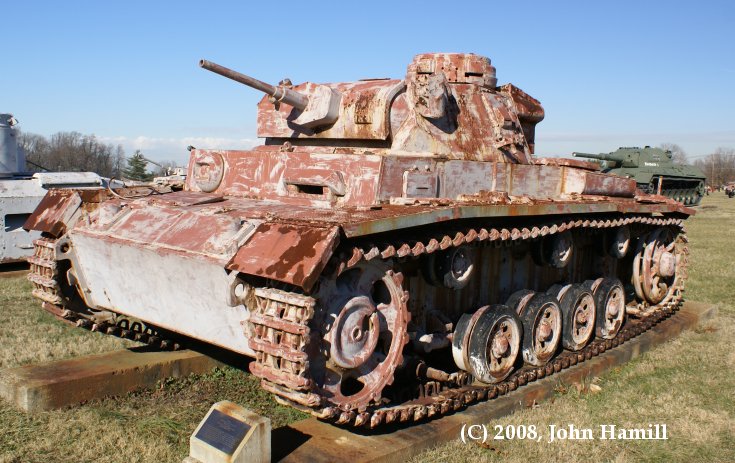
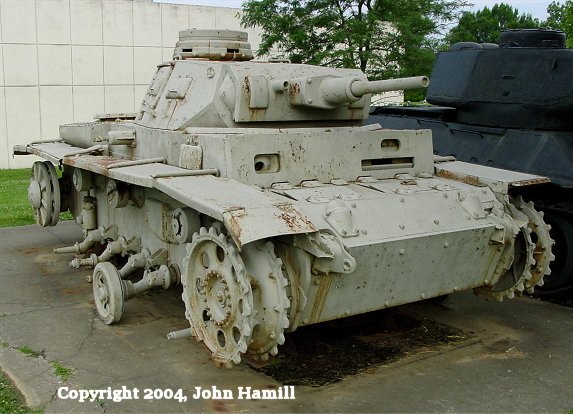
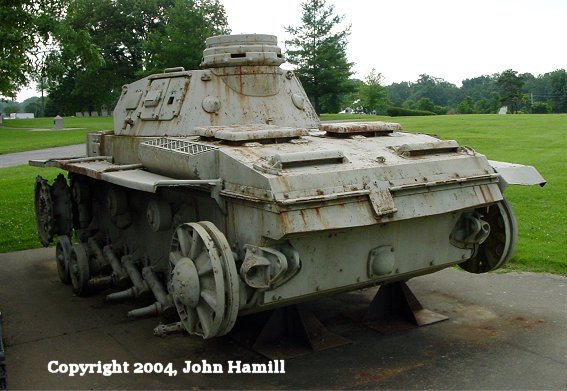
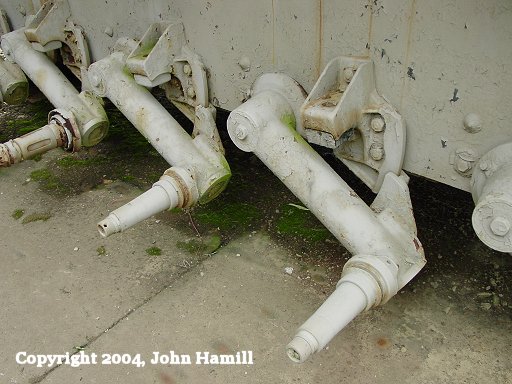
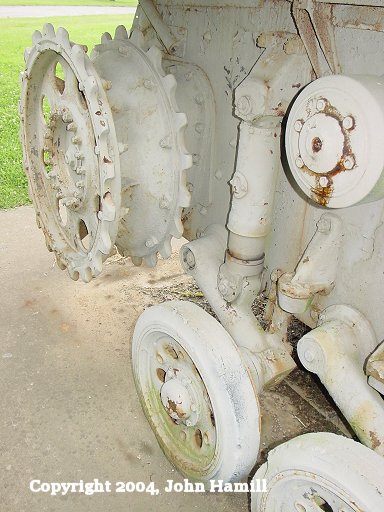
Panzer III
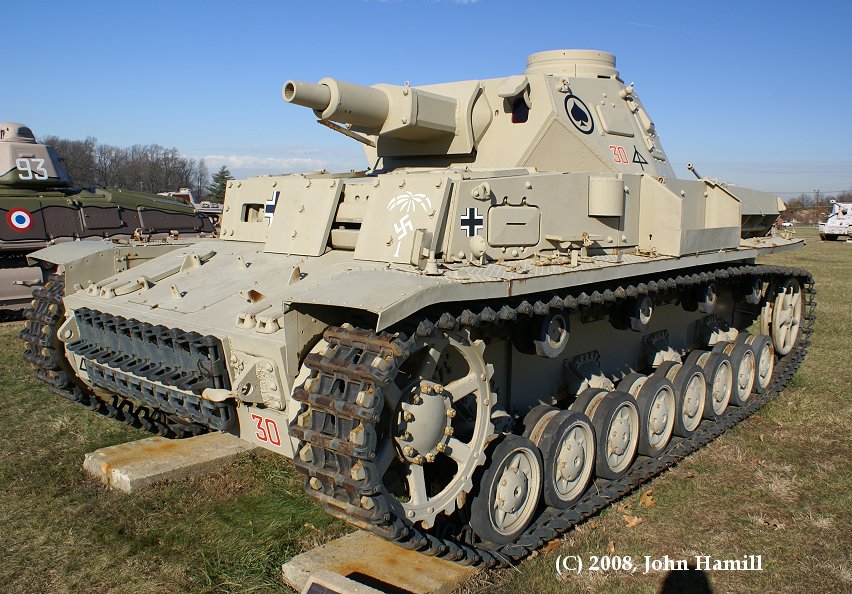
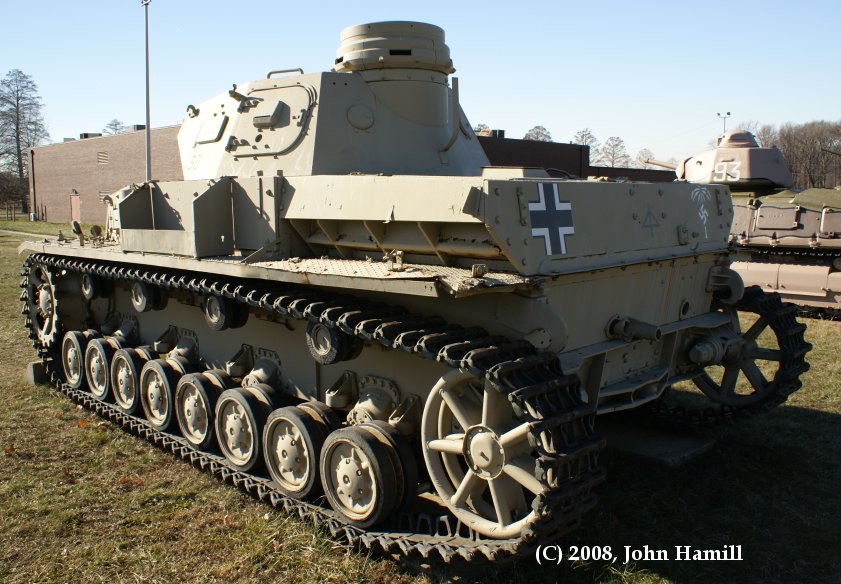
Panzer IV
Panzer III and Panzer IV
These types of tanks were Germany's first formidable tanks of World War II, and after their introduction became the most numerous in the Panzerwaffe until the end of the war. They were continuously improved throughout the war. The Panzer III was designed for the anti-tank role, and originally mounted a 37mm gun. The 37mm proved inadequate, and was eventually upgunned to a long barreled 50mm, which was superior to the American short barreled 75mm gun in the Lee and Sherman. Panzer III production ended in late 1942. The Panzer IV was designed for infantry support, and mounted a 75mm gun. The larger gun made it better suited for anti-tank use, however, and made it a fearsome vehicle throughout the war.

Nashorn
The Nashorn was a panzerjager, or tank hunter, first used at Kursk.
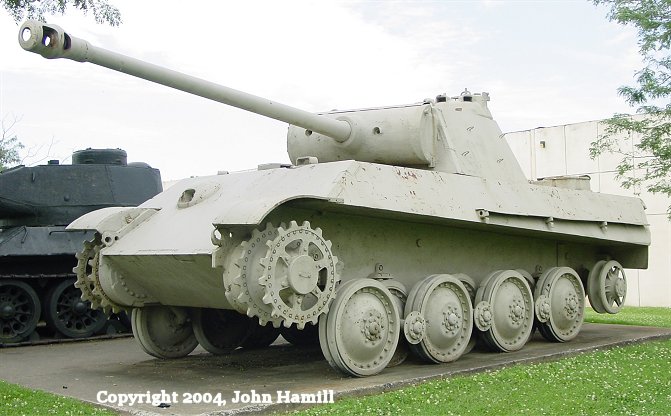
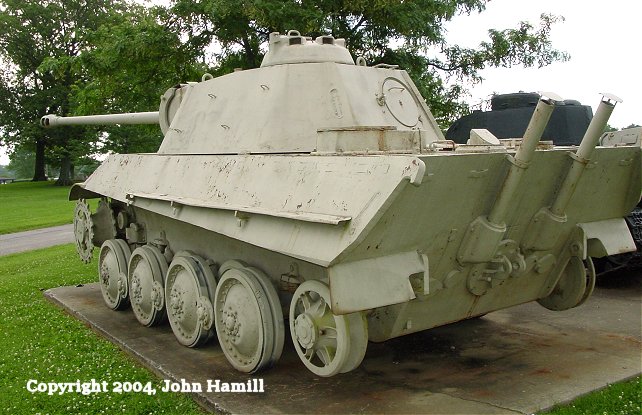
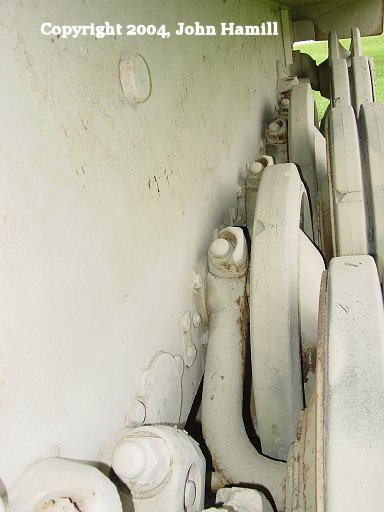
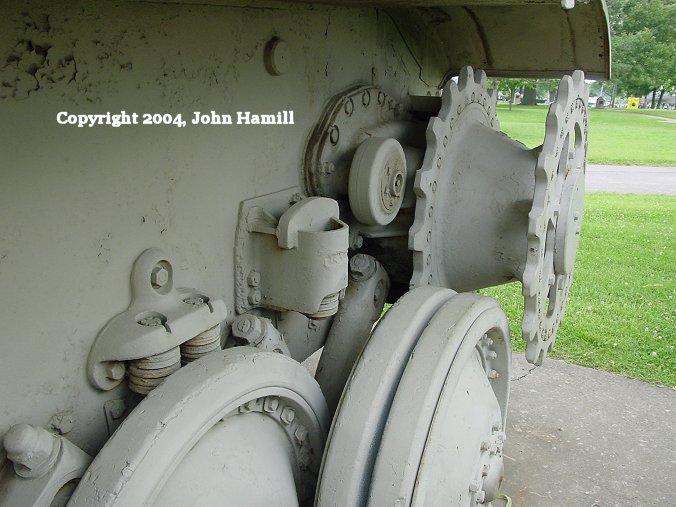

Panzer V or Panther
The Panther was developed in response to the Russian T-34, which was first encountered in the winter of 1941. The best features of the T-34 were adopted, such as sloped armor and torsion bar suspension. A long barreled 75mm gun was mounted which could deal with Soviet medium tanks and any Western tank then available. The Panther was first used at Kursk in 1943.
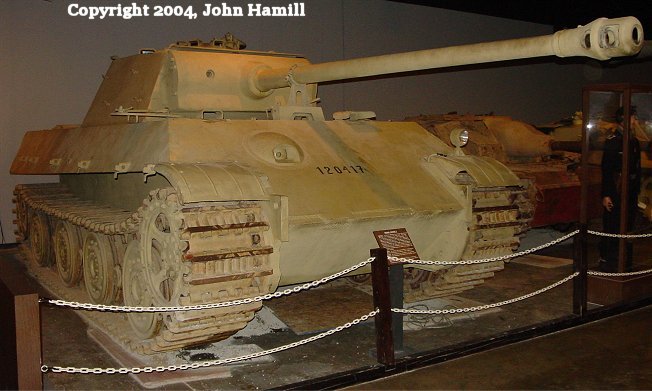
Panther II
A developmental project, this is one of only a few Panther IIs produced. It had more armor, a maximum of 100 mm versus 80 mm on a regular Panther, and a better gun, the 88 mm versus the 75 mm on a regular Panther. This particular vehicle has a Panther I turret.
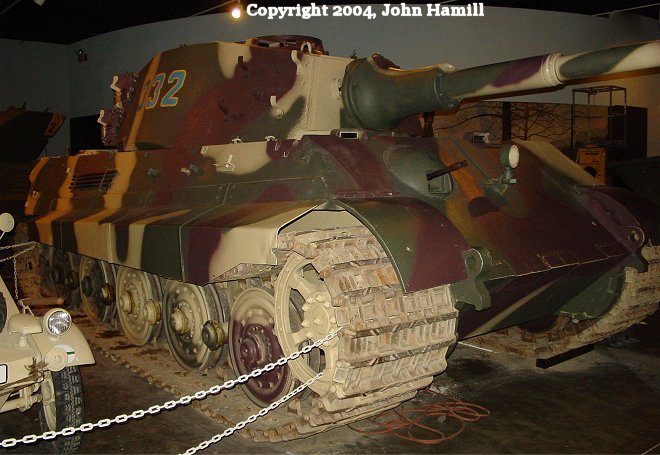
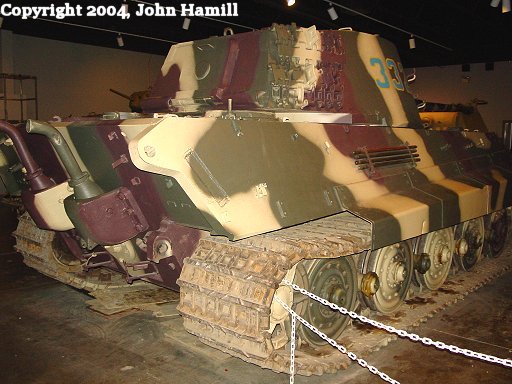
Tiger II or King Tiger
The largest tank fielded in any numbers during World War II, 485 King Tigers were produced starting in December 1943. With a maximum of 185 mm of armor and an 88 mm gun, the Tiger II could destroy virtually any Allied tank in existence. The vehicle's best known use was at the Battle of the Bulge in December 1944, where this particular model was captured. The tank was not especially practical due to its large size, being too wide for many bridges and railroads, and they were a juicy target for Allied air power.
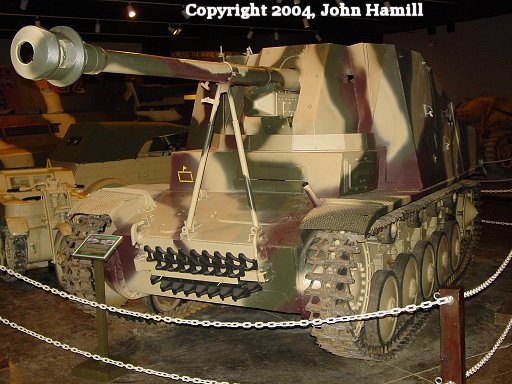
Marder II Waspe
An self-propelled anti-tank gun, the Marder II was based on the Panzer II chassis when those tanks became obsolete. This vehicle mounts a 75mm gun.
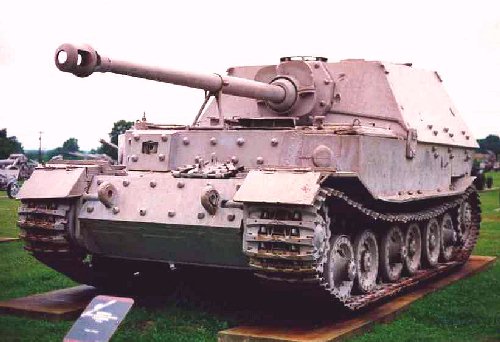
Elephant
This was the assault gun version of the famous Tiger tank. It was armed with an 88mm gun and had 200mm of frontal armor. The vehicle was designed to assist infantry assaults, and its big gun and heavy armor made it ideal for this purpose. Although doctrine dictated it was not to be used as an tank destroyer, it often was. Its slowness , however, made it vulnerable to being out maneuvered. This vehicle is one of only two in existence.
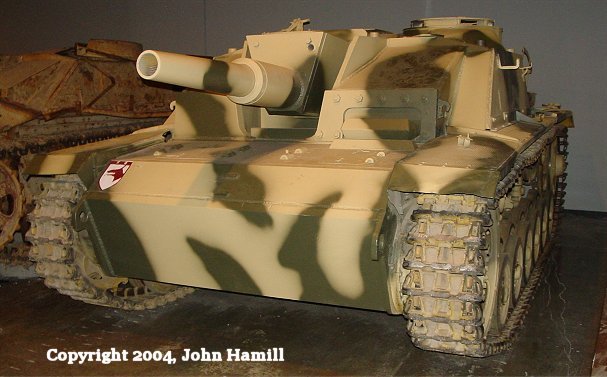
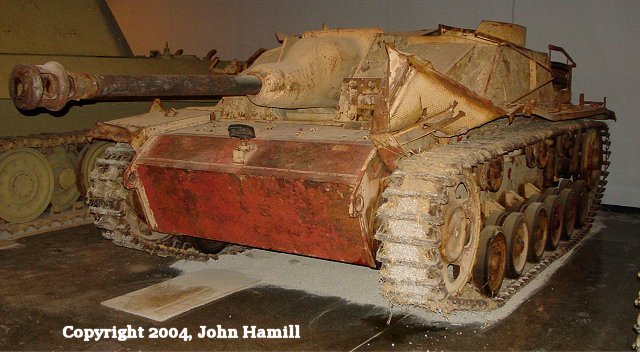
Sturmgeschutz III Ausf. G
An assault gun for infantry support based on the Panzer III tank chassis, it mounts a 75 mm gun. This particular vehicle was recovered from a swamp in 1994.

German Assault Guns
1st on left- Panzerjager Mk IV
2nd from left: Jagdpanther- Based on the Panther chassis, this tank hunter was introduced in January 1944 with an 88mm gun. Only 230 were built, and they were mainly used on the Eastern Front.
3rd from left: Jagdtiger- Based on the Tiger chassis, this tank hunter was introduced in July 1944 with a 128mm gun.
4th from left: SdKfz 162 Pz IV- Introduced January 1944 with 75mm gun.
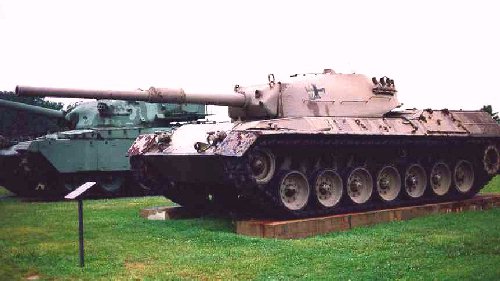
Leopard 1
The Leopard 1 has been one of NATO's most widely used tanks. It first came out in 1965, and was fairly lightly armored, but was armed with the excellent British L7 105mm gun. The tank has now been superseded by the Leopard 2.
Back to Armored Fighting Vehicles Page